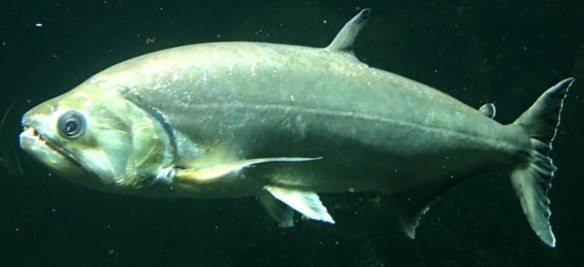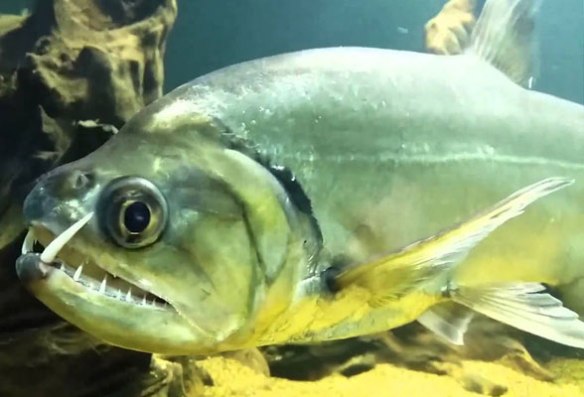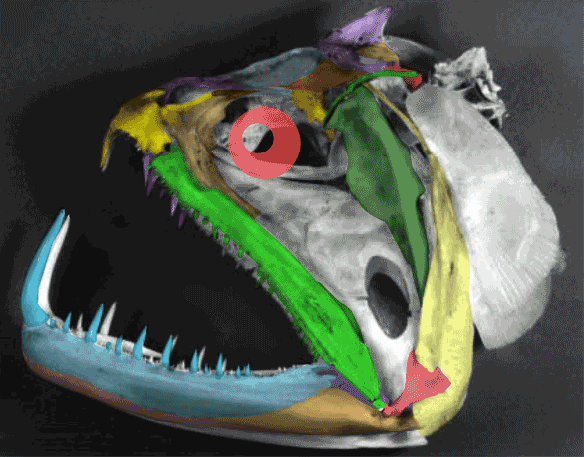
Figure 1. Hydrolycus, the dogtooth characin of South America.

Figure 2. Hydrolycus face showing the outsized lower fangs.
Hydrolycus armatus (Jardine 1841, typically .9m, up to 1.1m in length) is the extant dogtooth characin or payara of tropical South America. Here it nests with Amia, the bowfin. The skull is taller and narrower. The anterior teeth are longer. The maxilla extends to the quadrate. The jugal is absent. The postorbital is tiny. The intertemporal, supratemporal and tabular are reduced to narrow rods. A parietal crest is present. The lacrimal is crescent-shaped.

Figure 3. Hydrolycus skull with colors added. That short premaxilla marks this taxon as a basal teleost.
The long teeth
are used for spearing piscine prey.
References
Jardine W 1841. Naturalist’s Library: Ichthyology, Edinburgh.
